Read the latest Blogs below or use the search function on the right hand side to find a specific blog.
Superannuation Guarantee Increased
Superannuation Guarantee Increased from 1st July 2013
Minimum requirements start rising from 9% to 12% with company directors now personally liable for meeting minimum requirements.
Proposed increases from July 1 each year are:
2013 9.25%
2014 9.50%
2015 10.00%
2016 10.50%
2017 11.00%
2018 11.50%
2019 12.00%
The Coalition Government have indicated that they intend to freeze the 9.25% rate for a period of two years.
The superannuation guarantee age limit of 70 years has been removed from July 1.
This means that SG will have to be contributed by employers for employees over 70 years of age.
The SG is paid on "ordinary times earnings."
This includes salary or wages, bonuses and commissions.
They generally do not include overtime or unused leave on termination of employment.
It also excludes earnings of less than $450 per month and employees under 18 years of age working less than 30 hours per week.
The SG is payable 28 days after the end of each quarter to be tax deductible for the employer.
Buying a Business and Due Diligence
Buying a Business and Due Diligence
Due diligence is the investigation, checks and balances undertaken by a prospective purchaser to ascertain whether a business "stacks up" and actually is what is claimed and presented by the vendor.
The purchase price, performance and return on investment all dictate whether the acquisition is economically viable and meets the fundamental criteria of investing in an asset.
Cash Flow
Cash may well be considered to be the foremost requirement for sustainability of a business.
Profit in itself may not be adequate to sustainability.
You must understand the data presented to you and the underlying assumptions being made regarding future cash flows.
A business may well be making profits but slow paying debtors, build up of stock and poor planning are some of the reasons a business may experience cash shortages.
Consider also revenue sources, is there a major customer which increases the risk profile of the business?
Working Capital
Management of current assets and current liabilities is fundamental to the survival of a business.
It is important to understanding the dynamics between the control of inventory, debtors, creditors and cash.
Current assets less current liabilities is a basic measure of the liquidity of a business and its ability to pay its debts as and when they fall due.
If this equation is negative, the business may well be trading while insolvent.
Future Performance
Historical performance must not be relied upon as an expectation of future profitability.
There must be a real focus on the assumptions and compilation of data presented that forecast future results.
Current internal systems, quality of assets and personnel will all have a huge impact on future performance.
Replacement of capital assets and turnover of key employees may have a large impact on cash flow and efficiencies.
Be aware of current contractual arrangements, the quality of the document and expiry dates.
Due diligence is a detailed investigation of all aspects of a business and how this will impact on future performance.
Remember, past performance, however well it may have been, is not an assurity of future results.
Property and Tax - Negative Gearing
There are tax advantages in investing in property, but these should be looked at as "cream on the cake."
The main consideration should be the fundamentals of investing in an asset with due consideration being given to income streams, capital growth. and overall rate of return on the investment.
Negative gearing is the term used to describe the shortfall between an income stream and expenses incurred in holding an asset which may reduce your taxable income.
To calculate the tax deductible amount estimate the income and deduct estimated expenses.
Income may be derived of rent received.
Deductible expenses would include interest paid on loans to purchase the asset, borrowing costs, rates, insurance, land tax and repairs.
If the expenses exceed the income the shortfall will be tax deductible and hence reduce your taxable income.
To use an example, if the negative gearing is $10,000 p.a. and you are in the 37% tax bracket, then you will reduce your actual tax payable by $3,700.
The larger the negative gearing and the higher your tax bracket, the greater will be the reduction in the tax you pay on your taxable income.
Remember the whole purpose of investing in an asset is to maximise your capital growth and income return, not to merely maximise your tax deductions.
The investment needs to stand on its own two feet.
Sale Of Business In Confidence
There are many reasons a vendor may wish to advertise their business for sale in confidence.
These include risk of suppliers and or clients being unsettled, staff concerned about job security and competitors gaining sensitive information.
A good business broker will ensure adequate confidentiality when advertising your business for sale and will adhere to the following procedures.
Are you sure your 'independent contractors' are not employees
Two recent cases have highlighted how important the distinction between 'independent contractors' and 'employees' is:
Taxpayer slammed on (lack of) record keeping
The AAT has upheld the application of a 50% penalty to a taxpayer for 'recklessness' in claiming deductions that couldn't be substantiated.
Be careful about property arrangements with family!
The Administrative Appeals Tribunal (AAT) has held that a taxpayer who jointly owned a townhouse with his son (who lived there) was liable for CGT on his share of the property when it was sold.
Spike in email scams
The ATO is warning taxpayers to protect their personal and financial details following a sharp spike in reports of tax-related email scams.
Hiring Temporary Workers Successfully
Evaluate Your Needs
First step is to consider your staffing needs.
Do you need a part-time or full-time temporary worker? This will depend on the nature of the work and type of assignment or project to be fulfilled.
Consider your expectations so you know what skill level is required to fulfill the role.
Advertise Widely and Creatively.
There are of course many options available to advertise for employees including media (newspapers, radio), internet sites and social media (twitter, linkedIn, Facebook).
There are many advantages in using an external recruiting company which substantially reduces the administrative burden of direct hiring. Temporary workers acquired in this way are sourced, referenced and paid by the recruiting agency. Good recruiters will have extensive experience in recruiting temporary staff and will often have prior knowledge of suitable candidates.
Follow the Laws
Treat employees fairly and follow all federal and state laws. You still have responsibilities for workers hired through an agency, know what these are and be aware of them before hiring. A good recruiting agency will alert you to these when contacting personnel.
Using a Recruiter
Use the guide below for questions you should ask.
a) Sight current certificates of insurance for workers' compensation and liability.
b) Do they have a OH & S policy?
c) Do they check on the progress of their temporary workers?
d) How do they recruit the temporary workers?
e) What mechanisms and guarantees are in place if the temporary workers do not meet expectations?
f) What is the time frame in providing temporary workers?
Engaging a Temporary Worker
Treat them as part of the team and not as an "outsider."
Complete a proper induction program and clearly explain their roles and responsibilities.
This will make them feel connected and be productive in a shorter time frame.
Ensure they have the adequate tools and knowledge from the outset to ensure the engagement is a successful one.
Not For Profit Organisations and Good Governance
Even though many directors and board members participation is of a voluntary nature they must still ensure good governance of the organisation.
What Is Good Governance?
Governance is made up of the structure, systems and understandings that exist that guide the NFP to make decisions to achieve its objectives.
This helps to achieve and maintain value in the organisation and helps board members to make good judgements and act ethically and in good faith.
The NFP own constitution is of curse a good starting point to ensure basic governance requirements.
Available Guidance
ASX Corporate Governance Council's Principles and Recommendations (asxgroup.com.au) may be used as a model of governance requirements.
Charities registered with the Australian Charities and Not-for-profits Commission (ACNC) must now look to the ACNC standards for the minimum governance requirements (acnc.gov.au).
Australian Institute of Company Directors website companydirectors.com.au
Institute of Chartered Accountants website chartered accountants.com.au/NFPgovernance
Principles of Good Governance
The Australian Institute of Company Directors has issued a guidance of 10 principles for good governance.
1) Roles and Responsibilities
Roles and responsibilities need of individual board members need to be clearly defined.
2) Board Composition
The right mix of backgrounds, skills and experience is essential.
3) Purpose and Strategy
These should be set by the board and reviewed periodically.
4) Risk Management
These must be identified and include compliance, financial, governance, operational, environmental, reputation and strategy.
Risk management should be supported by appropriate internal controls and structure.
5) Organisational Performance
Appropriate financial and non-financial measures need to be used to monitor performance.
6) Board Effectiveness
The board needs to evaluate its own performance, conduct meetings efficiently, leverage sub-committees and have a succession plan.
7) Integrity and Accountability
Transparency to all stakeholders is essential. A well informed board needs regular reporting to ensure timely compliance, good governance and decision making.
8) Organisation Building
Enhancing the capacity and capabilities of the organisation is a key objective as well as identifying skill gaps and addressing them appropriately.
9) Culture and Ethics
The board sets the tone for ethical and responsible decision making. A code of conduct and policies on managing potential conflicts of interest can be useful.
10) Engagement
Effective engagement with stakeholders is an essential activity of the board. At a minimum the annual report produced in an easy to understand format should be used to communicate with stakeholders.



